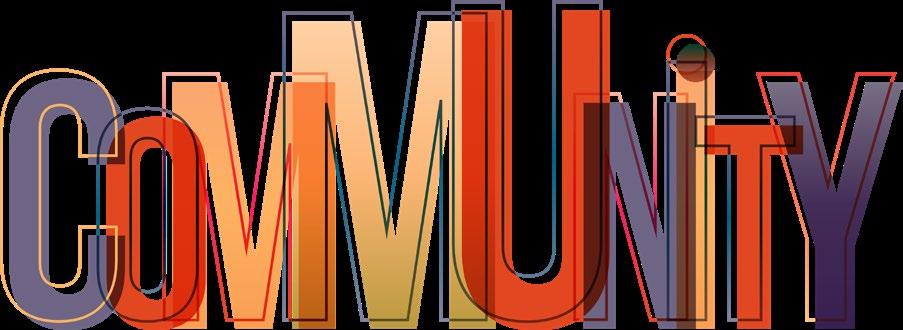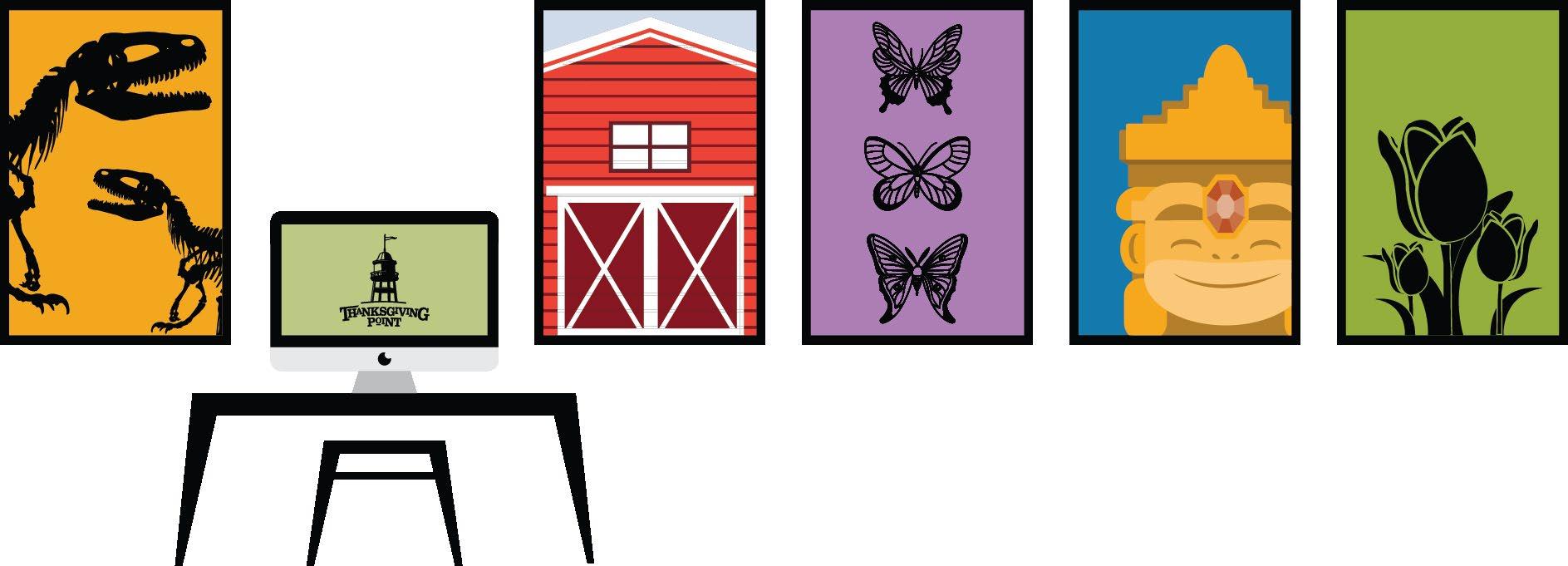
6 minute read
STRENGTHENING THE SOCIAL FABRIC OF THE COMMUNITY: Studying Social Impact at Thanksgiving Point
by Stephen Ashton, Ph.D. & Kari Ross Nelson, M.A. M.S.
Introduction
Advertisement
Does having a museum in your community make it a better place to live? Like museums around the country, we’ve been wondering about this. Hi, we’re Stephen and Kari, the Audience Research and Evaluation Team at Thanksgiving Point. Our job is to conduct research and evaluation to support Thanksgiving Point’s mission of transformative family learning. The question of the social impact of museums is one we’ve been exploring for a few years now. What started as a study to understand the social impact of Thanksgiving Point is now being scaled to a national level, and we’re excited to be part of it!
When museums talk about making an impact, that often refers to the educational, economic, and social realms. Typically, economic impact studies document the impact of salaries, business to business spending of operational costs, and visitor spending in the community as extensions to a museum visit. In fact, did you know that museums contribute more than $50 billion into the U.S. economy annually, support more than 726,000 American jobs, generate $12 billion in tax revenue, and spur tourism from around the world? Educational impact studies document the number of students, schools, and districts served. One study found that children who visited a museum during kindergarten had higher achievement scores in reading, mathematics, and science in third grade than children who did not! Findings from these kinds of studies are often used to make a case for funding and partnerships. Social impact is a little harder to pin down: we define it as the effect of an activity on the social fabric of the community and the wellbeing of the individuals and families who live there.
Stephen Weil, a long time legal expert in the arts and a museum administrator, said in 2006: “Over time, the museum field will need to develop a vast arsenal of... more persuasive ways to document and/or demonstrate the myriad and beneficial outcomes that may occur for their individual visitors and have impact on the community beyond.” Ten years later, museum analyst and planner John Jacobsen pointed out “the field still lacks accepted ways to measure impact.” At Thanksgiving Point we’re working to meet this challenge as part of an Institute of Museum and Library Services grant awarded to the Utah Division of Arts & Museums.
Thanksgiving Point Study
In 2016 we partnered with Eva Witesman, a professor at BYU, along with her class of graduate students in the Masters of Public Administration program. Together we developed a plan and tool for measuring Thanksgiving Point’s social impact. To measure the impact, Thanksgiving Point invited families who had never been to Thanksgiving Point before to come, free-of-charge to each of our venues. At the time that included the Museum of Natural Curiosity, Museum of Ancient Life, Ashton Gardens, and Farm Country. Over the course of about three months these families came and experienced what Thanksgiving Point has to offer. At the end of their visits we sent the families an extensive survey that helped us measure changes they had experienced in several categories, such as family relationships, personal health and wellbeing, and higher educational attainment. About 60 families completed the study, meaning they visited four times with their family and then took the survey.
We were thrilled with the results of the study! We measured 95 indicators that were separated into those categories we listed above. Of those 95 indicators, 67 of them (71%) showed statistically significant positive changes. In other words, families that visited Thanksgiving Point had experiences that led to strengthened families, a greater sense of personal health and wellbeing, and higher educational attainment.
Open response items revealed that the most meaningful aspects of participant’s experiences were spending quality time with family and children, and the appeal for multiple age groups. Additionally, participants expressed surprise at Thanksgiving Point’s quality, size, beauty, and variety of experiences.
We used the results of this social impact study along with the results of a separate economic impact study to demonstrate to the Utah State Legislature the impact Thanksgiving Point was having in the community. This helped Thanksgiving Point receive significant funding to support the building of the Butterfly Biosphere.

Statewide Utah Study
We were excited to share the positive results of our Thanksgiving Point social impact study with partners and colleagues, including the Utah Division of Arts and Museums (UA&M). UA&M is the art and cultural agency responsible for regranting National Endowment for the Arts funding across the state in addition to providing technical assistance and professional development opportunities to Utah’s hundreds of cultural organizations. UA&M wondered if the study could be adapted, scaled, and implemented with several museums in the state of Utah. The hope was to not only document the social impact of individual museums but to seek to understand the collective social impact across the state.
After partnering with UA&M, we started modifying the study to take it statewide. This included refining the questions and expanding some of the categories we were studying to include intercultural competency. In addition to learning if museums strengthened relationships, encouraged education and learning, and promoted health and wellbeing, we wanted to know if visiting museums led people to be more sympathetic towards people who were different from them.
To conduct the statewide study UA&M recruited seven museums to participate. These included the Clark Planetarium, Monte L. Bean Life Science Museum, Nora Eccles Harrison Museum of Art, Red Butte Gardens, Springville Museum of Art, Tracy Aviary, and Utah Museum of Fine Arts. Each museum recruited visitors to join the study. In total, 392 subjects from the seven museums completed the end of experience survey. We at Thanksgiving Point were responsible for conducting and analyzing the research. Again, we were thrilled with the results of the study. Of the 104 indicators measured, 100 of them had a statistically significant positive increase across the study’s long-term outcomes for the seven museums combined! This means museums across the state are also having a positive social impact in their communities.
Upcoming Study
Building upon the work done at Thanksgiving Point and with UA&M, the Institute of Museum and Library Services (IMLS) recently awarded our partnership over $500,000 to take our work to a national scale. IMLS is a federal funding agency charged with advancing, supporting and empowering America’s museums, libraries, and related organizations. We’re calling the project Measurement of Museum Social Impact, or MOMSI for short. We’ll be recruiting 30 museums from across the country to deploy a survey—based on surveys used in the Utah studies—to their local visitors. Findings from those surveys will help us meet our first goal: documenting the social impact museums bring to their communities. The experience of those 30 museums will help us meet a second goal: developing a survey tool museums can use independently to document their own social impact. This will be an important tool to help museums evaluate and improve their work, as well as advocate for themselves.
Conclusion
We here at Thanksgiving Point have been proud to participate in these studies and have appreciated our partnership with UA&M. We look forward with optimism as we hope to demonstrate the positive social impact that museums are having across the nation. Museums have been severely negatively impacted by COVID. Attendance and revenues are down significantly. Many museums have had to close or lay off their staff. There’s never been a more important time to demonstrate the value of museums. We hope this study will help to demonstrate the vital role museums play in strengthening the social fabric of their communities.





